
Djoudj National Park restoration an immediate success
-
Species
Djoudj National Park is a waterbird oasis located in the delta of the Senegal River separating Mauritania and Senegal. But invasive species are threatening to crowd out the birds. We recently witnessed how our small investment in restoration made a big difference for the birds and tourism. The question now is how can we sustain this progress by strengthening the funding model for the park?
Djoudj is a wetland of nearly 16,000 hectares consisting of a large lake and surrounding streams, ponds and backwaters, and forms the first critical wetland stopover site for over a million migrant waterbirds and many other birds that have made it over the Sahara desert on their southward migration.
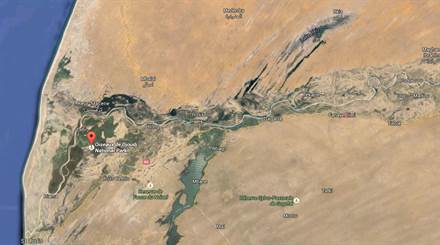
It is internationally recognised as a UNESCO World Heritage Site and one of the largest bird sanctuaries in the world, with more than 400 species counted. The avian highlight of the park is the largest colony of Great White Pelicans in West Africa. These birds nest colonially by the thousands on a bare mud bank in the middle of the marsh and are a spectacular sight to behold.
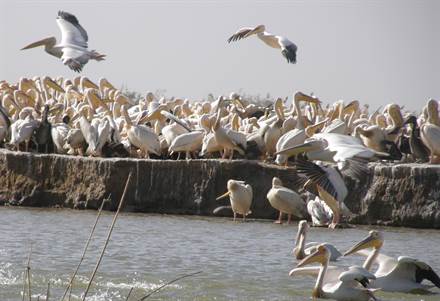
The wetlands are extremely popular with millions of birds that use the East Atlantic Flyway, stretching from northwestern Europe to West Africa (such as the Northern Pintail) and further south to South Africa (Black Tern). Furthermore, many African species that only migrate within the continent, such as African Spoonbill and large flocks of White-faced Whistling Duck (pictured below), depend on the park.
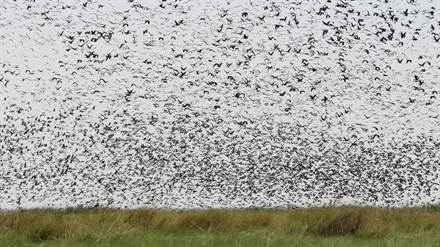
Lack of flood pulse threatening park
Djoudj formerly relied on the tidal flow of the Senegal river to maintain its wetlands, with mostly freshwater coming downstream during the rainy season and brackish, saltier water inundating upstream from the coast during the drier months. This changed in 1968 with the construction of the Diama dam downstream of the park. The flow of saltwater was cut off from the park while freshwater levels were raised upstream for navigation, irrigation for agriculture and drinking water supply.
Without the natural ebb and flow of the river, it has been a struggle for the park to maintain open water areas that are important to diving birds. Widespread colonisation of Typha and Phragmite reeds that thrive in stagnant freshwater is choking out the park’s open water vegetation. Despite efforts to maintain open water areas by managing the flow of water, the park is struggling and these invasive species are proliferating.
A small investment in restoration makes a huge difference
There is an urgent need for better maintenance of the park to ensure a long-term supply of water to the marshes, and to restore the canals to improve water circulation and control invasive species. In 2013 and 2014, our Arctic to Africa initiative supported by the Arcadia Fund, funded restoration work performed by community members.
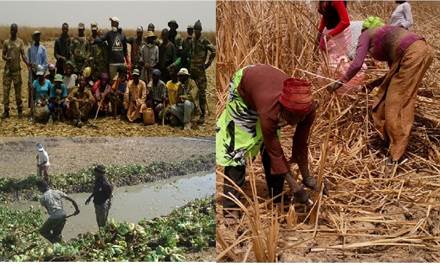
Over 20 kilometres of waterways were reopened and 4,000 hectares were cleared of invasive plants, resulting in significant improvements for open water habitat that is critical to dozens of waterbird species and better water flows.
Our small investment of 15,000 dollars made a huge difference for the park’s birds. On a recent monitoring visit after the restoration work, thousands of waterbirds (such as the Great White Pelicans, below) were foraging in an area that had once been completely overgrown by Typha.
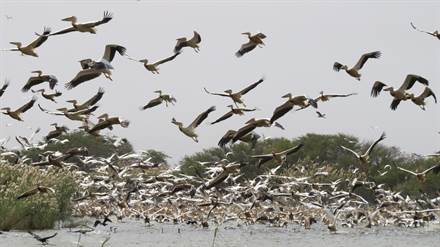
Another favourable outcome of the restoration is the re-colonisation of the restored area by lilies, the favourite food of thousands of ducks in the park.
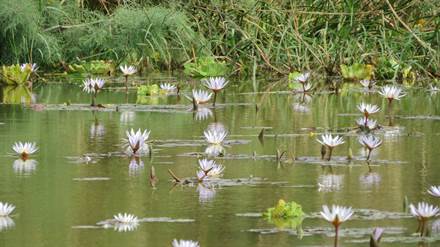
The importance of sustainable tourism
The outstanding birdlife makes Djoudj a major draw for international tourism. However, more consistent funding from tourism revenues is needed to address the continuous and large scale restoration challenges, both within the park and in and around other reserves in the Senegal Delta – with another 100,000 hectares of impenetrable cattails needing eradication along the Senegal river dyke and many now deserted areas where the life-sustaining flood pulse should be restored to prime waterbird habitat.
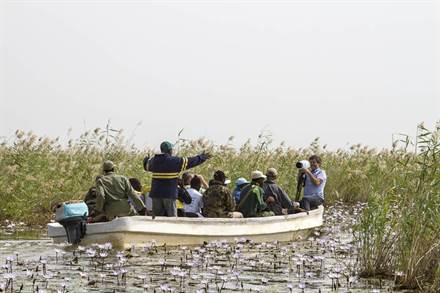
The 20,000 annual visitors only pay a two dollar entry fee, not nearly enough to meet the management needs of the park. In addition, hunting tourism is a popular activity just outside the park, and clearly benefits from the birds that use the national park as their core area. Unfortunately, the park doesn’t receive any of the revenue linked to hunting licenses.
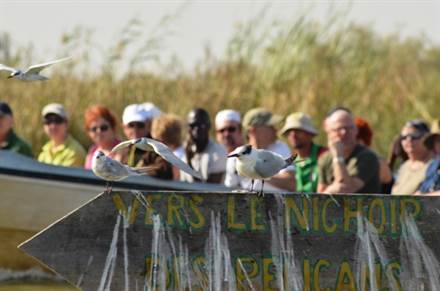
Sustainable long term solutions needed
Increased funding from higher visitation fees, particularly for foreign tourists, and keeping more of that revenue in the park, plus a share of hunting licence fees, would go a long way towards better meeting the needs of the park. Extra revenue would allow the park to maintain the favourable conditions and better manage bird numbers for conservation, tourism and hunting, not only in Djoudj but in other outstanding reserves in the Senegal Delta. This would enhance the visiting experience for both birds and people, and we are discussing these options with the government of Senegal and the Park Service.
